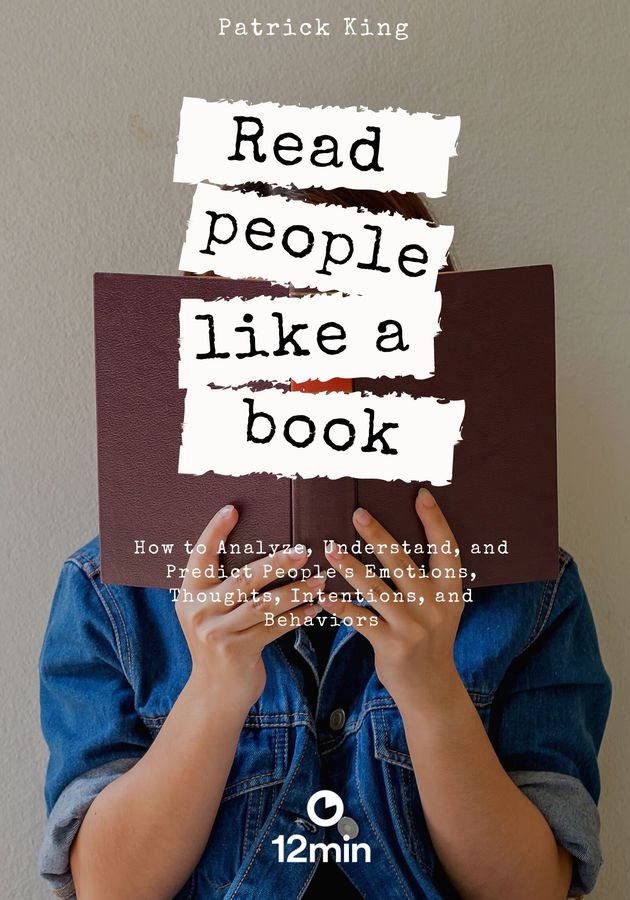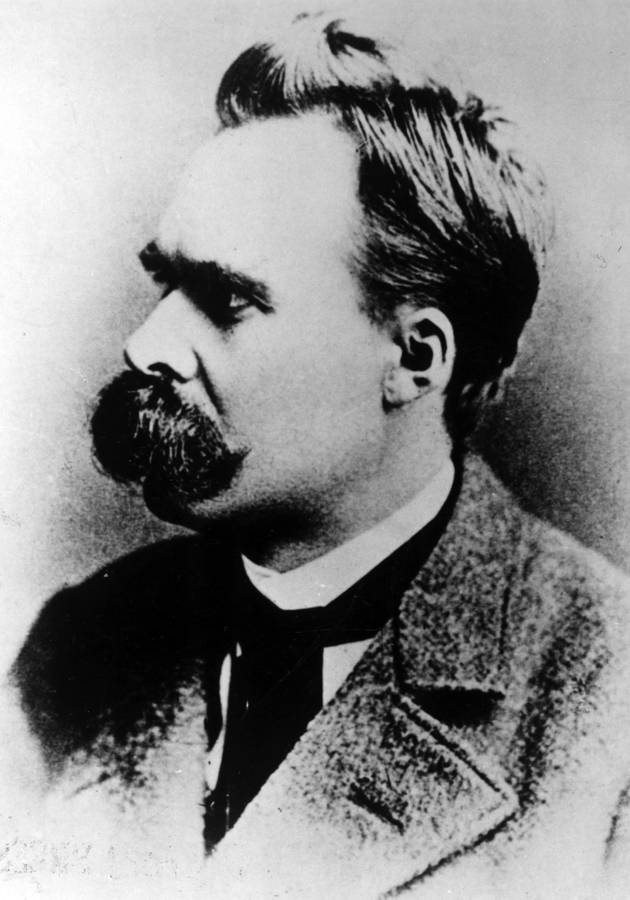In the opinion of Donald Miller and Dr. J.J. Peterson – developers of the StoryBrand Marketing Framework – “most marketing plans do not fail in intent or philosophy of communication, they fail in execution.” For this reason, their 2020 book “Marketing Made Simple” is “all about making the execution of a marketing strategy easy.” In it, Miller and Peterson present an easy-to-understand and “ridiculously pragmatic” five-step marketing blueprint that, they claim, should work for any type of company, regardless of size or type of business. So, get ready to learn how to create a successful sales funnel through a simple and easily executable marketing plan!
The actual stages of a relationship
At heart, both marketing and sales are all about trust. No matter how great your product or service is – and no matter how confident you might be it will improve other people’s lives – simply asking someone to buy it will never work. You have to earn their commitment first. “Asking for a sale is a relational proposition,” Miller and Peterson remark. “And relationships have rules.” Rule No. 1 is that good relationships are almost exclusively built slowly and cannot be rushed. Rule No. 2 states that all relationships – whether romantic, platonic, or business – necessarily move through the following three stages:
- Curiosity. This is the stage where you meet somebody and you want to learn more about them. It is a stage mostly about snap judgments. Curiosity is governed by the most primitive parts of our brain, which is why the only reason we might be interested in someone is our sense they can help us thrive or survive. Consequently, if you don’t tell your customer a story in which they survive and win in the end, then “they will set you aside – or, worse, discard you.” Branding, to sum up, is not about your story; it is about the stories of your customers and how they can be improved.
- Enlightenment. Curiosity is what makes one pay attention to someone else’s words; enlightenment is what invites them into a relationship. Since our brains are designed to experience pleasure when they understand something and to recoil in fear when they don’t, it’s important to help your customers see clearly why your product or service is a good solution to their problems. If curiosity is about the destination and the what, enlightenment is about the journey and the why.
- Commitment. The riskiest stage of a relationship and the reason why many sales fail. Taking risks works against our survival mechanisms, and rushing one to commitment before time activates their fight-or-flight reflex, ruining both the sale and the relationship. Only fools rush in, wrote Alexander Pope several centuries ago. Wise men eventually make a move, add Miller and Peterson. Moving slowly, they explain, doesn’t mean not moving but not being pushy. Commitment takes time – and usually about eight touchpoints. A “touch” can be anything from an email to a website visit, from a word-of-mouth to a head-to-head discussion. Of them all, emails are the best way to stay in a relationship with a customer and make them commit.
“The key to marketing and sales,” conclude Miller and Peterson, “is to invite the customer on a journey at the pace of a natural healthy relationship.” That’s what their 5-step marketing plan strives to do. It starts by building curiosity through a one-liner and website wireframe. Then it takes the customer through the enlightenment phase by creating lead generators and nurture emails. Finally, it invites the customer to make a commitment with a sales email sequence. Let’s explore each of these five stages and teach you how to build a successful sales funnel!
No. 1. The one-liner
As defined by Miller and Peterson, a one-liner is just that – “a concise statement you can use to clearly explain what you offer.” Originating in Hollywood – where it’s still being used to attract busy investors – a one-liner is what “makes people lean in rather than tune out at a cocktail party;” it is an invitation to a new and different experience; it is what picks locks and piques curiosity. All one-liners are composed of three parts: the problem, the solution, and the result. Consequently, crafting the perfect one is a three-step process:
- Start with the problem. As all good storytellers know, no story has actually begun until it has stated the problem. “When we’re waiting for a story to get started, we’re really waiting for a problem the hero has to overcome,” remark Miller and Peterson. The problem, put in the simplest terms possible, is the hook. Moreover, it is what adds value: without the problem, the hero has nothing to overcome, or, in translation, your product exists for nothing because it solves nothing. Finally, “stating the problem is a great way to be remembered in your customer’s mind.” Note the singular use of problem. A one-liner, remember, is not a place to talk about every problem your product solves. Choose only the most common one.
- State the solution in the middle. Whatever you’re selling, you’re probably selling it because you believe that your product or service provides some kind of a solution to an existent problem. That’s what the second part of your one-liner should reveal: the raison d'être of your company. Don’t overthink it, because it’s actually the easiest part – it’s why you’re selling what you’re selling. Rather than being clever and cute, try to be careful and clear in your wording. The second component of your one-liner should close the story loop – not open another one. So, connect the solution directly to the problem in a brief and descriptive manner. Try to include your company name. Avoid commas at all costs.
- Close things out by revealing the result of the solution. The final part of the one-liner is the part everybody’s been waiting for. It’s that one climactic scene at the end of the movie, that all-important event all other events lead to. It’s what resolves all conflict and releases all tension. It’s the utopia of tomorrow, the problem-free world your solution brings – healthy teeth, a repaired bike, a worry-free home.
Need an example of a good one-liner? Here’s StoryBrand’s: “Most business leaders struggle to talk about what they do, so we’ve created a communication framework that helps people clarify their message. When you clarify your message, word starts to spread about your company and your business grows.” Problem – solution – result. Simple, clear, memorable.
No. 2. A wireframed website
Your one-liner should be the central component of your entire messaging campaign. However, once it makes a prospective customer curious about your solution to their problem, they may come looking for more information. That’s where your website comes from. The more beautifully designed the better, but never forget that it’s actually the words on your website that sell, not the drawings. In fact, the biggest mistake companies make when it comes to their websites is related to language: they use too few words where they need to give a proper explanation, and too many words where only a few would do. Moreover, making a complicated or confusing website – no matter how beautiful it might look – is tantamount to refusing to provide the necessary information to your customer.
That’s why you must plan how your website will look before you hire someone to design it for you. The best way to achieve this is through a wireframe, defined by Miller and Peterson as “a long piece of paper (or digital page) that includes the text in a rough-draft drawing of what the website might look like.” Focus most of your energy on the following nine sections – the more of them you can include in your website, the better.
- The header. The very top of your website and your only chance to make a good first impression. Use very few words. May they constitute an answer to the following three questions: 1. What do you offer? 2. How will it make your customer’s life better? and 3. What do they need to do to buy it? Don't forget to add an image of smiling people enjoying your products. It’s cliché, true, but only because it always works.
- The stakes. The failure section, “the section of your website in which you explain what you are saving customers from.” After showing your customers what their lives might look like if they purchased your product, show them the pain of living without it. A story without stakes is no story at all. However, don’t overdo it. Don’t get too negative.
- The value proposition. The section in which you list the benefits of your product or service. Stories love to demonstrate contrast. That’s why the stakes should follow the header and why the value proposition should follow the stakes. Captivate the mind of your consumer the way ancient storytellers did: by switching between positive and negative messaging.
- The guide. The section wherein you introduce yourself as the hero – the brand or the person able to solve your customer’s problem. All good guides must be simultaneously empathic and authoritative. To communicate the latter, include testimonials, logos of companies you’ve worked with and a simple statistic. To communicate empathy, just fill in the blank in this all-powerful sentence: “We know what it feels like to…” It always does the trick.
- The plan. The section that tells your customer how they can do business with you. As we already mentioned, people don’t like confusing things. So, make your customer’s path as clear and as convenient as possible. Make it easy for them to choose you.
- The explanatory paragraph. This is where you invite your customers into your story. A long-form text, this is also the section where your SEO should come from. Your explanatory paragraph should identify what your customer wants and who they want to become, position you as their guide, and call them to action by casting a future vision for their lives.
- The video. An optional section. Many visitors prefer watching videos to reading text. That’s why you should treat the video as an alternative and use it to repeat what you’ve already said in the text. People who don’t like to read usually have short attention spans. So, keep your video brief.
- Price choices. Another optional section, applicable only if you can afford custom pricing or different plans for product or service. You know the drill: list three items and expect the vast majority to buy the item in the middle.
- Junk drawer. The section where you list everything that’s essential but nobody cares to read until committing. So, don’t bother people with it. Put your contact information, the FAQ forum, the about page, and similar facts and figures at the bottom of your website. That’s where they always are and that’s where it’s easiest to find them.
No. 3. Lead generator
A lead generator – usually a free sample or a PDF, but can also be a video series or a live event – is something you offer your potential clients to build authority and trust in your brand while getting their attention – and contact – in return. In the words of Miller and Peterson, a lead generator is “a great excuse to exchange contact information [with your prospective customer] without being awkward.” A great lead generator should achieve the following six things:
- Position you as the guide. Show them that you’re the expert. Use your lead generator to share empathy and authority with your potential customer.
- Stake claim to your territory. Differentiate yourself from the crowd. Demonstrate why your solution to your customer’s problems is the only viable one.
- Qualify your audience. Be specific. If there are different types of people you’re trying to reach, then create several lead generators. Each of them, however, must be specific and communicate with a particular type of audience.
- Create trust by solving a problem. It’s one thing to promise a solution to a problem, but another thing to present one. Your lead generator should do just that – for free. That’s how you earn trust.
- Create reciprocity. This is the reason why your lead generator should be given away for free. When you give value for nothing, you create reciprocity, that is to say, you make your customers indebted. Most of them will want to return the favor and will do so by sharing their email or even placing an order.
- Have an interesting title. Nobody wants to read case studies or white papers on any topic whatsoever. However, everybody would at least click on a title promising to list “the five mistakes people make with their website home page.”
A PDF is probably the most convenient type of lead generator. There are many ways to create one that will enlighten your curious prospects. For example, you can capture an interview with an industry expert. You can also create a list of ideas regarding the solution of your customer’s problem or a list of fatal mistakes. You can make a reusable worksheet or host an educational event. Webinars are always a good idea, and keynote presentations an even better one. Whatever you do, try to scratch the curiosity itch with the title but hide nothing in the text itself.
No. 4. Nurture email campaigns
The point of the lead generator is to earn you some space in your customers’ inbox. But that’s only the beginning of the game. To remain there, you need to find a way to “nurture” your email relationships. That’s what nurture email campaigns are for. Essentially, they are what you need to keep you in the game. As we already mentioned, you don’t want to rush a sale. Most people would like to hear about your product or service at least five or six times before they’re willing to make the purchase. So, make sure that they will. There are several ways to achieve this, but the three most common ones are the following:
- Weekly announcements. Find a reason to email your customers once a week. The rules are the same as in the case of the lead generator: you must offer something free and something enlightening. Consider an educational series or maybe a weekly podcast. Either way, try to use a catchy title, include a short description in your mail and at least a mention of your product at the end of it.
- Weekly tips. If you don’t have the time or the resources for an educational series or a podcast, then try something brief, such as a Monday morning tip. Depending on your business, they can be anything from new yoga poses to cocktail recipes to leadership quotes. Once again, don’t forget to let them know you have a related product to sell.
- Weekly notification. If you have a business that has many products or consistently makes or introduces new ones, then a nurturing email campaign can be a series of simple catalog-style pages. The key is to make sure your email recipients are the first to hear about all those new and exciting things you’re offering.
Even though most nurturing email campaigns are weekly, nothing stops you from sending emails even more frequently. Once again, be simple, and not clever, enlightening but not boring. Use images, audio and video if you can; otherwise, use short words, short sentences and active language.
No. 5. Sales email campaign
Whereas the nurture email campaign is focused on building trust, the sales email campaign is all about closing the deal. “An email sales campaign is not about being shy,” explain Miller and Peterson, but “about challenging your customers to take a step in solving their problems. Today.”
There are a few things to keep in mind when creating a sales campaign. First and foremost, you must determine which product you’re selling, because unlike a nurture campaign, a sales campaign must be focused on a single and specific product. Next, you should identify the problem this product solves for your customers and turn your entire email into a call to action. To force the action, always try to create some limited-time offer. By creating a sense of urgency, you’re inspiring your client to act sooner rather than later. The more extended the window in which your client is allowed to act, the likelier it is they won’t.
Even though writing a good sales sequence isn’t exact science, there are some formulas that usually work. Here’s one easy, six-email sequence that you can create today.
- Deliver the asset. Your first mail will likely deliver the content/lead generator promised on signup. But that’s it. Be nice, short and grateful at your first contact. Include your one-liner in the message, but don’t dive into a pitch just yet.
- Problem + solution. In the second mail – sent a few days after the first one – identify the problem you’re going to solve for your customers and empathize with their pain. Then introduce your product or service as the solution to this problem. Even though it’s, proverbially, the eighth touch that closes a sale, it’s the third one that begins the dance.
- Customer testimonial. Even if interested, your prospective customer won’t make a sale until they feel certain they’re not being played for a fool. That’s why customer testimonials are so important. Include them in your third mail. Keep them short and full of soundbites.
- Overcome an objection. At this point, most customers are held back from buying by no more than a single doubt. Help them overcome it. Send them a Q&A or a FAQ or just address the most common objections. Don’t worry if you don’t guess the exact ones. Just addressing the right emotion should be enough.
- Paradigm shift. Many customers might feel that they’ve already tried whatever you’re selling. So, try to explain them, in your fifth mail, how you’re different and why you’re unique. A paradigm shift comes with a language that promises revolutions and transformations. It is a language that says, effectively: “You used to think this, but now you should think this way.”
- Sales email. In this email, you only ask for the sale. Put your customer on the line and make them choose whether they will accept or reject your offer. This is a great time to include an expiration date. As much as people know that one-time offers happen all the time, they still fall for the trick. So, use it.
Final notes
In the first chapter of “Marketing Made Simple,” Donald Miller and his contributing writer Dr. J.J. Peterson bemoan the fact that “most business books are long on theory and short on application” and vow to tell their readers exactly what they should do and in what order to do it so that their marketing works. Anyone who has read “Marketing Made Simple” would probably agree the two have delivered on their promise.
The book is not just another theoretical introduction to marketing, but an easy-to-read, step-by-step practical guide to building a marketing platform and growing a company. Simple, specific, and straight to the point, “Marketing Made Simple” will help anyone who struggles with the execution of a marketing strategy. Especially if you’re in charge of the marketing for your company – to quote Miller and Peterson – consider this your new playbook.
12min tip
Marketing doesn’t have to be difficult. Five marketing tools are all you need to build a sustainable sales funnel: a one-liner, a website, a lead-generating PDF, an email nurture campaign, and an email sales campaign. Put these five in play, and your business will begin to grow. It’s that simple.





























